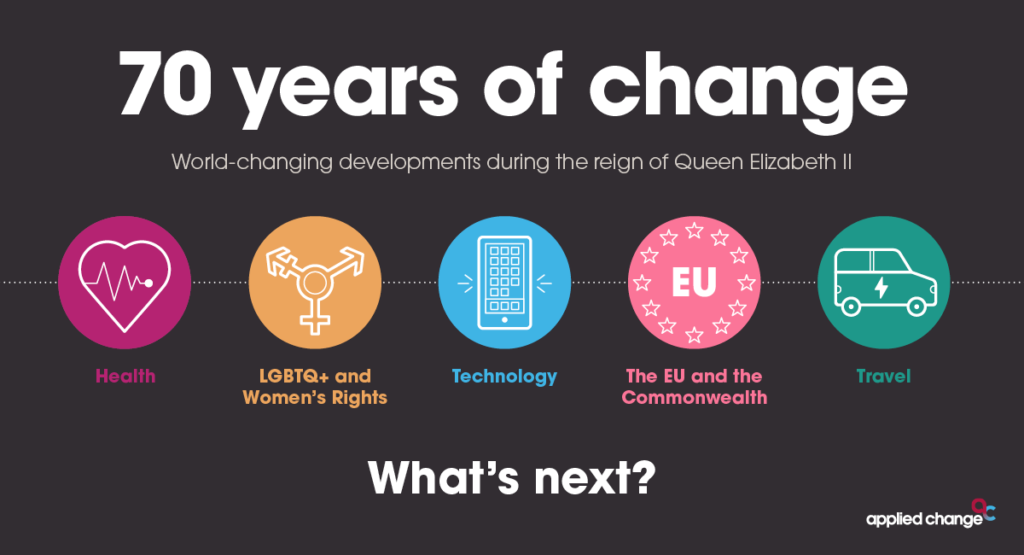Lessons in Change #4 – The importance of clear instruction
By Mark Vincent
Share

The Covid-19 pandemic shook the world like nothing else before it. The virus quickly spread across the globe and no country managed to escape unharmed. This has forced many governments to bring in new rules and laws designed to change our behaviour and fight the spread of the coronavirus.
When China’s government started enforcing strict quarantines, the situation was unprecedented but most people in the West remained unconvinced that they would ever face such draconian measures. And yet, we did: the UK’s lockdown meant millions of us across the nation were told to stay at home for anything but essential travel for weeks at a time, followed by months of further restrictions. And, most surprising of all in an individualistic society like the UK: we did stay at home.
Understanding what drives change
A key priority of the governments in this situation or, in fact any organisation trying to make change at scale, is to figure out how to maximise behavioural compliance rates – i.e. the number of people who will successfully make the change. Human behaviour is complex, and most of us exhibit some signs of change resistance even when pushed to make big changes in our lives. So how did the UK government successfully convince 60 million of us to turn our daily lives upside down overnight?
I’ve discussed establishing the motivation for change and reducing the friction in separate blogs, so let’s consider another important aspect: clear instruction. i.e. guiding us step by step to do the right thing.
The Importance of Clear Instruction
We know from experience that we can only turn our aspirations into actions and outcomes when we have a plan. In other words we’re much more likely to be successful when we are clear in our own minds how we are going to achieve those aspirations and what we need to do and when.
Whether it’s doing more exercise, eating better or being more effective at work. Ideally we’ll do things like schedule time at work to focus on the important things, decide which days we’ll exercise, plan meals ahead of time. It’s these little things that help us shape our behaviour by breaking the changes down into smaller steps and laying out the journey ahead so we don’t have to be constantly thinking about what to do next.
When we give ourselves specific instructions on how to make real, lasting changes to our lifestyles we are for more likely to succeed than just than if we just rely upon on vague ideas and broad goals. Change is hard and good intentions aren’t enough: by breaking change down into easy-to-follow steps, real meaningful change starts to look achievable.
Leading change in the UK lockdown
There are countless examples of this principle being applied during the pandemic response, such as signs reminding us to regularly wash our hands for 30 seconds at a time, wear masks in shops, one way systems in public areas, keeping 2 metres’ distance. All these were there to remind us and avoid us having to think too much about the actions we should take in a given moment.
The need for detailed instruction is also different for each of us, some of us like more detail and others prefer less and it also depends on the situation and perceived risk. The higher the perceived risk the more instruction and guidance we may be likely to need. Before doing a skydive I’m very likely to listen to the instructor in great detail, asking lots of questions and yet I’ll often skip reading the manual for a new tech gadget.
Consistency is also important. The controversy that arose following Dominic Cummings’ now infamous trip to Barnard Castle is clearly a result of anger and confusion caused by the sudden lack of clarity in the situation: are we, or aren’t we, allowed to do what Mr. Cummings did? The fallout from that incident shows just how quickly we’re rattled when that clarity we thought we had is shaken and we’re no longer clear on what the rules are.
The recent lockdowns have given us one of the greatest behaviour change case studies in recent history. It’s shown us how behavioural principles can be enacted globally to enable change on a huge scale. These principles apply universally for any change, whether individually or at scale.
In this case change, whether personal, professional, or political, demands a clear path and guidance. And that path should be designed to make it as easy as possible to do the right thing.
Get in touch
If you’re not achieving your goals or want get more done in your business, we can help.
Whether it’s supporting you, growing your leadership team or directly helping you to make something happen, contact us on (+44) 0800 612 3548 or click the button below.
Alternatively sign up below to be the first to know about our events and receive free resources and insider tips.
Related content
Seventy Years of Change – Celebrating the Queen’s Platinum Jubilee
Twenty-five years ago, as part of her Golden Jubilee celebrations, Queen Elizabeth addressed Parliament and said “Change is a constant, managing it has become an expanding discipline. The way we embrace it defines our future.”…
A Lesson in Change Management from David Attenborough and the BBC?
When making change that matters, what lessons can we learn from David Attenborough and the BBC?
The Unseen Perspectives: Unlocking the Hidden Drivers in Business Transformation
Discover the impact of individual perspectives on the success of your business transformation. Discover the impact of individual perspectives on the success of your business transformation. Learn how to leverage these hidden drivers for more effective change management with real-life examples.
Why the automotive future is electric
Electric vehicles are coming. It is an industry transformation taking place at unprecedented speed. This insightful article from McKinsey & Company highlights the changes taking place, that will disrupt more than the automotive industry. …





